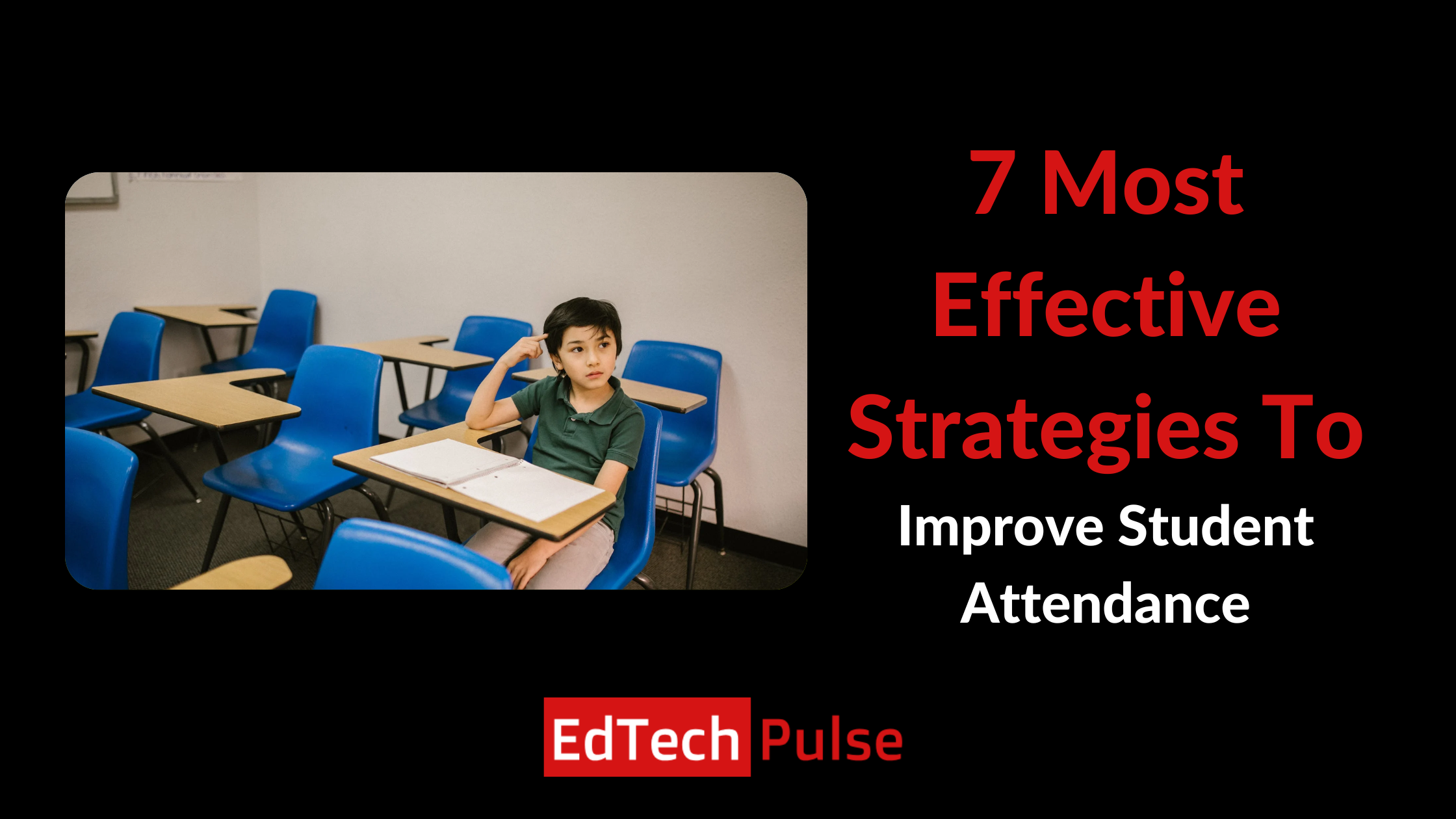7 Most Effective Strategies To Improve Student Attendance
Have you ever faced the problem of low attendance of students? When it comes to attending school, many students try to find absurd reasons to skip school. Sometimes the excuses used are just to avoid school time. Other times, it may be a lack of interest, issues at home, ill health, bullying in school, inability to cope, and more.
Constant absenteeism adversely impacts a child's performance in academics. And to avoid this, all schools and parents should implement strategies to improve student attendance.
Here are some strategies that you can use to improve attendance.
1. Interact With Parents
Parents have a crucial role in the upbringing of their children. Their actions, reactions, emotions, etc., are noticed. Thus, if any student is absent or unable to attend school, the teachers should interact with parents and ask about the student.
Clear communication in this situation between the student (having low attendance) and the parent helps both the parent and school to know the reasons for his absenteeism. Accordingly, the parents and the teachers can come up with a solution that improves the problems. It is important to note here that changes in the school environment are equally important as changes at home.
2. Introduce Playful Learning
A student studies well when the subject is interesting. Furthermore, the student's interest decreases with time when teachers follow the same old routine all year long. Therefore, as a school, it is essential to develop an environment where the students are attracted to learning.
90% of the institutions have a hard and negative environment which makes the students uncomfortable. The positive and friendly surroundings of your school will motivate the students. A positive environment enriches students' minds. And thus, this strategy would be useful.
3. Connect With Students
As a teacher, one must know which students have low attendance and should try to connect with them the most. If they have any difficulty with the curriculum, teachers should be able to understand their problems and help them throughout the course. This way, students tend to rely on teachers for worrying things.
Furthermore, there can be several other problems relating to family, career, and so on. These problems need to be acknowledged, understood, and resolved. Counselors in the school can talk to students in a private session and assist them in steering through these issues. The assistance will eventually help students cope with these issues effectively throughout their course and beyond.
4. Award Students for Consistency
The school should introduce an award system for students. For instance, awards can be given to students who are consistent or who have increased their attendance over time. This small token of appreciation motivates students to be regular in school. It is a sign of achievement for students. Thus, introducing this makes students want those awards. It is a win-win situation for the school.
5. Change Your Teaching Style
The old teaching techniques have made students lose interest. With the dynamic changes in the educational landscape, post-pandemic, and technology integration, it is necessary to teach subjects more interactively. For this, the schools must organize workshops and training sessions for teachers to help them modify their methods in order to adapt to the changing needs of the students.
Changing methods is essential and an innovative step towards making difficult subjects interesting. This is a very effective way to help the students if they cannot understand the subject.
6. Co-Curricular Activities
Co-Curricular activities are an important part of the school curriculum. They allow students to explore their interests beyond academics. Furthermore, Co-curricular activities hone the existing skills or bring to light hidden talents. As a result, students are more likely to participate in these activities. The school should organize new clubs and festivals to make students more interactive.
Also, it improves the student-teacher and peer relationship, prompting the students to participate with their classmates actively and interact with their teachers. Such activities will help students discover something new about themselves and integrate it into their everyday learning, consequently improving their attendance.
7. Use Latest Technology
Students nowadays get bored easily with teaching techniques. The Gen Z is more inclined toward technology. As a result, you can leverage technology to attract students to school and develop their interests.
96% of students say that e-learning tools are fun and enable them to learn independently. Schools can install gadgets for the student to use productively. Undoubtedly, this is a path every school and institution should invest in.
Conclusion
Parents and institutions are both responsible for students' grades and attendance. An effective way of learning in a positive environment is encouraged. Furthermore, the roots of certain problems can be easily solved by interacting with the students. Therefore, it is critical to understand the student's problems. Once you do that, coming up with strategies and implementing them will become easier!
